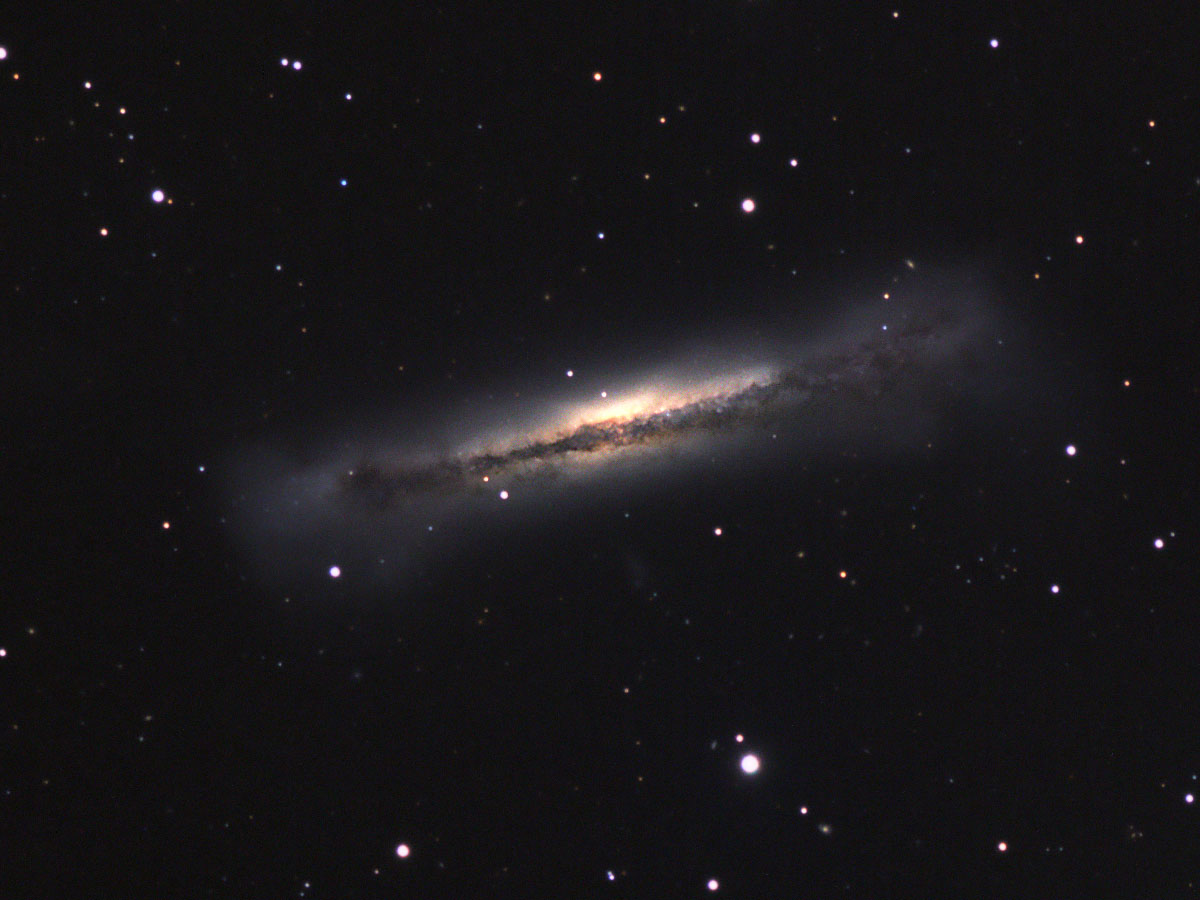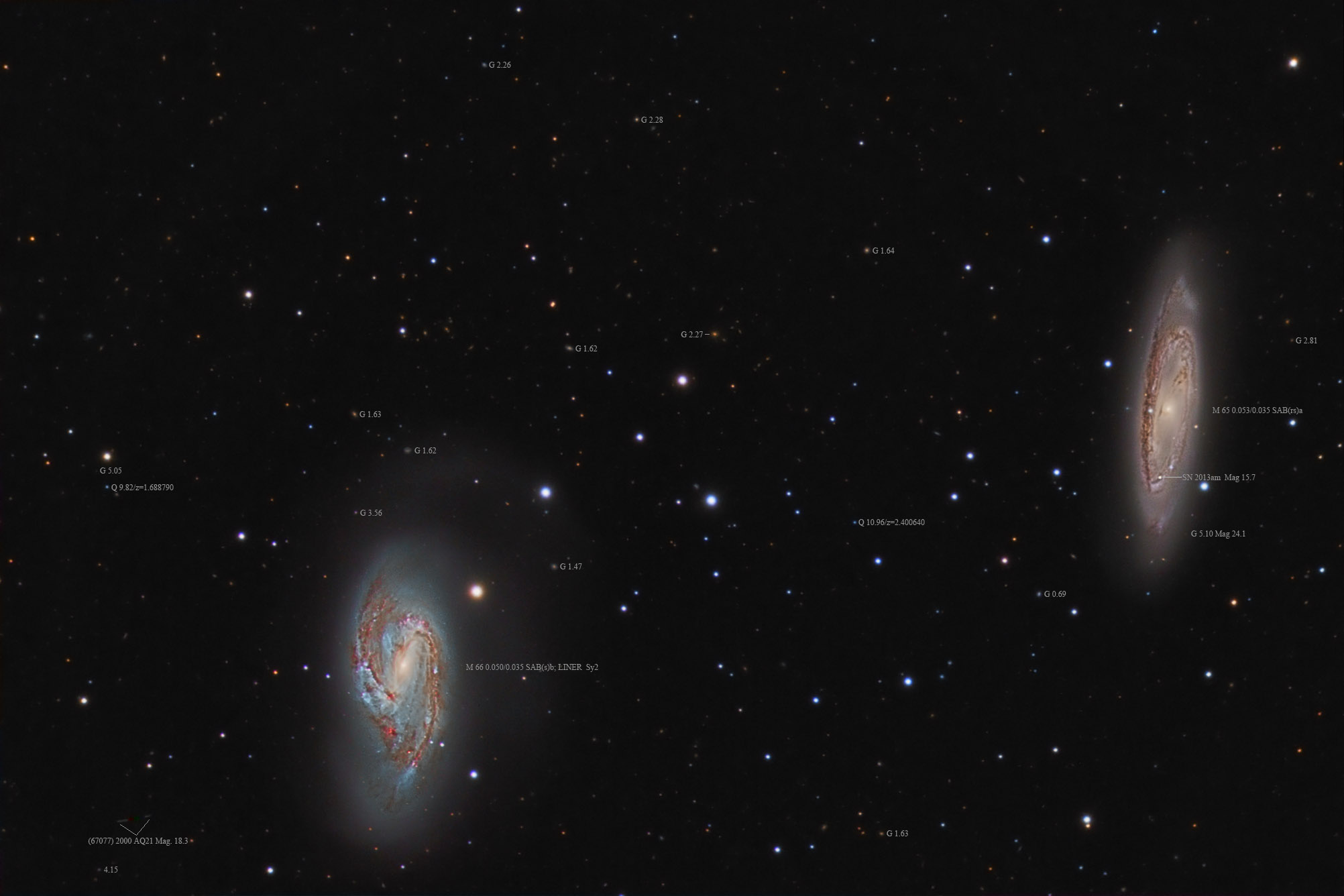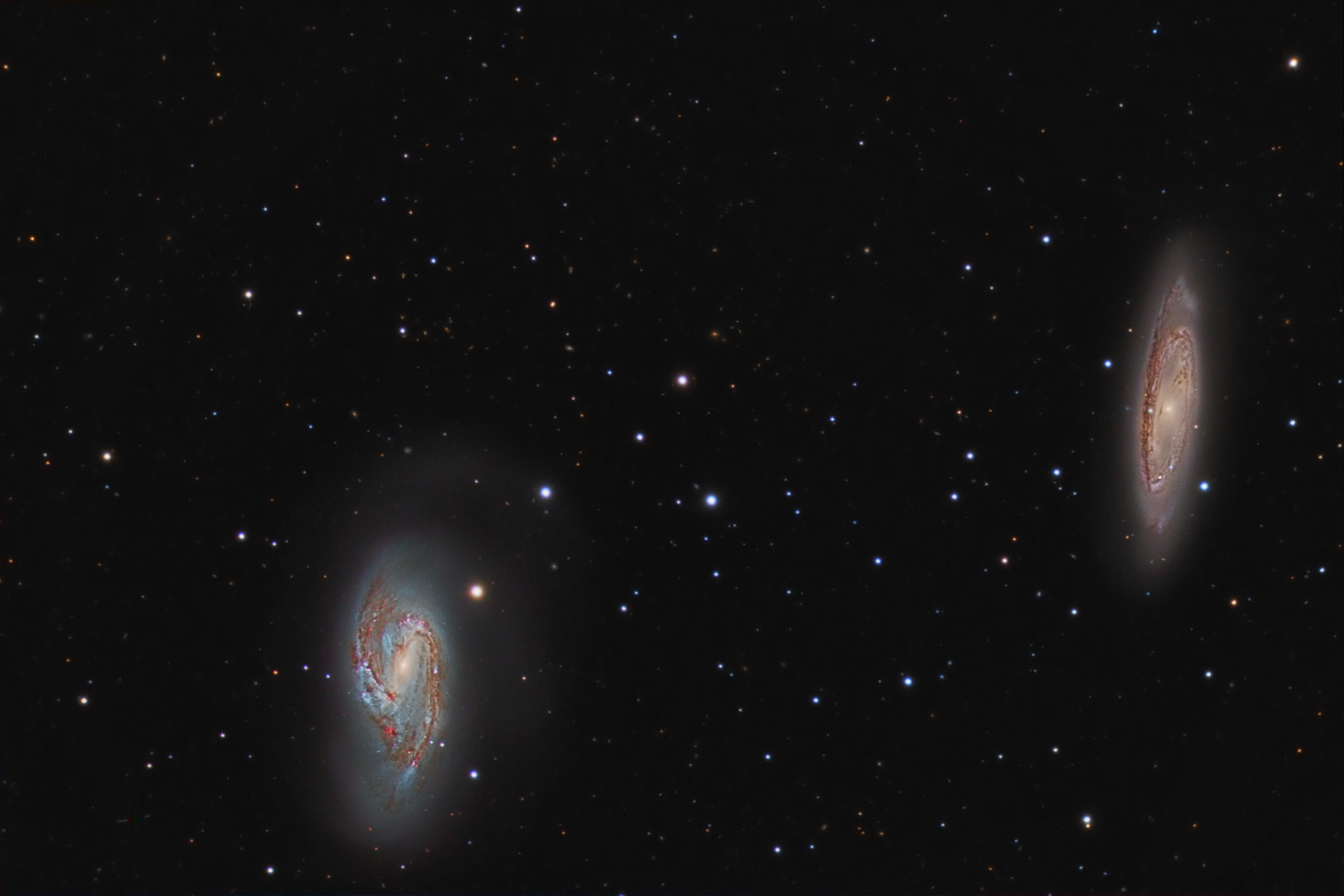| Description | Images |
Object name: ARP317Designation(s): ARP317, M065, M066, NGC3628, Arp 317 is also known as the Leo Triplet. It consists of three galaxies, NGC 3628, M65 and M66. M66 by itself is also Arp 16. Unfortunately, my field of view is too small to include all three even in a mosaic of two images as the distance between the two Messier objects and NGC 3628 is just too great. For a view that shows all three in one image see: http://cseligman.com/text/atlas/ngc3628wide.jpg Related Designation(s):11HUGS 229, 11HUGS 230, 11HUGS 231, 1AXG J112016+1259, 1RXS J111857.4+130535, 1RXS J112016.7+125917, 1XMM J112014.9+125931, 2MASS J11185590+1305323, 2MASS J11201498+1259297, 2MASS J11201694+1335218, 2MASX J11185595+1305319, 2MASX J11201502+1259286, 2MASX J11201701+1335221, 2XMM J112014.8+125932, 2XMM J112017.0+133523, 2XMMp J112014.8+125932, 87GB 111738.3+131603, 87GB 111739.6+135204, 87GB[BWE91] 1117+1316, 87GB[BWE91] 1117+1352, ADBS J111852+1305, ADBS J112020+1259, ADBS J112026+1334, AKARI J1118564+130535, AKARI J1120166+133514, ARK 288, ARP 016, ARP 317, ARP 317 NED01, ARP 317 NED02, ARP 317 NED03, ARP317, ASK 432998.0, CGCG 067-054, CGCG 067-057, CGCG 067-058, CGCG 1116.3+1322, CGCG 1117.6+1316, CGCG 1117.7+1352, CLASS J1120+1335, Cul 1117+132, Cul 1117+138, CXO J111855.9+130532, CXO J111855.97+130533.4, CXO J112014.9+125929, CXO J112016.9+133522, EUVE J1118+13.0, GB6 J1120+1259, HDCE 0626 NED010, HDCE 0626 NED011, HDCE 0626 NED012, HIPASS J1120+13a, HIPASS J1120+13b, HOLM 246A, HOLM 246B, HOLM 246C, IRAS 11163+1322, IRAS 11176+1315, IRAS 11176+1351, IRAS F11163+1321, IRAS F11176+1315, IRAS F11176+1351, LDCE 0778 NED032, LDCE 0778 NED034, LDCE 0778 NED035, Leo I GROUP NED02, Leo TRIPLET, Leo TRIPLET NED01, Leo TRIPLET NED02, Leo TRIPLET NED03, LGG 231, LGG 231:[G93] 002, LGG 231:[G93] 003, LGG 231:[G93] 004, LQAC 170+012 001, M065, M066, MCG +02-29-018, MCG +02-29-019, MCG +02-29-020, MESSIER 065, MESSIER 066, MESSIER 066:[NB2012] D, MG1 J112015+1259, MG1 J112017+1335, MJV 14273, MRC 1117+132, MRC 1117+138, NBGC 15-02, NGC 3623, NGC 3623:[L2011a] X0003, NGC 3627, NGC 3627:[ECB2002] alpha, NGC 3628, NGC 3628:[RW2000] X-01, NGC3628, NSA 139146, NSA 139183, NVSS J112016+133520, PGC 034612, PGC 034695, PGC 034697, RGB J1120+129, RX J1120.2+1259, RX J1120.2+1259:[BEV98] 009, RX J1120.2+1259:[ZEH2003] 01 , SDSS J112014.98+125929.4, SDSS J112017.01+133522.8, SDSS J112017.01+133522.9, TXS 1117+138, UGC 06328, UGC 06346, UGC 06350, USGC U374, USGC U374 NED03, USGC U374 NED04, USGC U374 NED05, UZC J111855.9+130537, UZC J112015.1+125928, UZC J112017.5+133513, VLSS J1120.2+1259, VLSS J1120.2+1335, VV 308a, VV 308b, [AHG2014] B157, [AHG2014] B158, [AHG2014] B159, [GH83] 078, [GMM2009b] 26, [GMM2009b] 27, [GMM2009b] 28, [HG82] 56 NED04, [HRT2007] J112016+133526, [JBB2007] J112017.02+133519.9 , [M98j] 117 NED03, [M98j] 117 NED04, [M98j] 117 NED05, [RHM2006] SFGs 088, [RHM2006] SFGs 106, [RPG97] 125, [TSK2008] 0267, [VCV2001] J112014.9+125927, [VCV2006] J112014.9+125927, [WB92] 1117+1316, [WB92] 1117+1352, |
Permanent link: https://images.mantrapskies.com/catalog/ARP-GALAXIES/ARP317-M065-M066-NGC3628/NGC3628LUM8X5RGB2X10R1CROP1.jpg |


